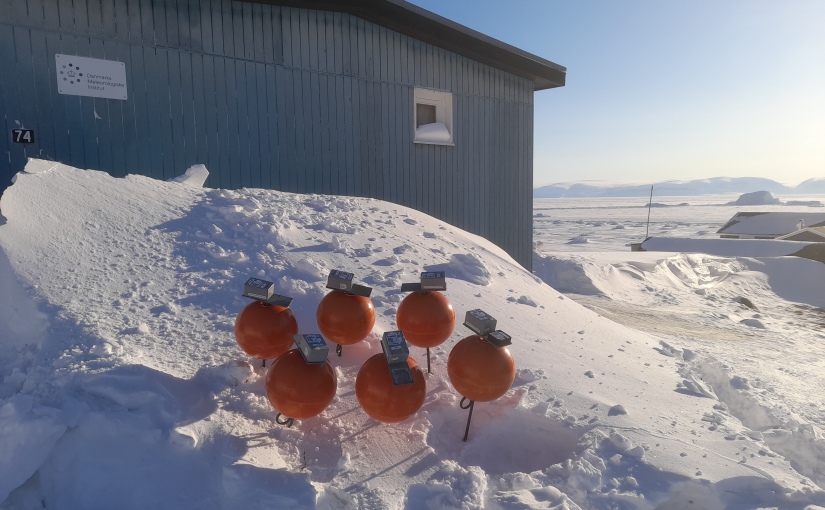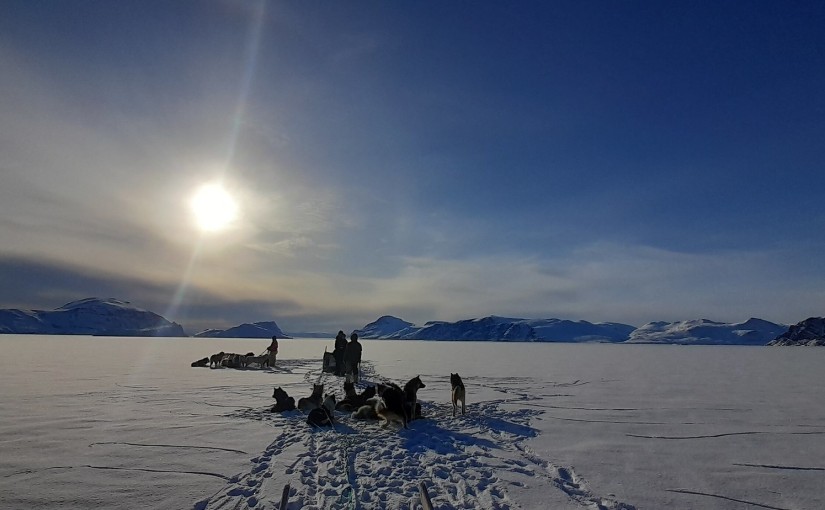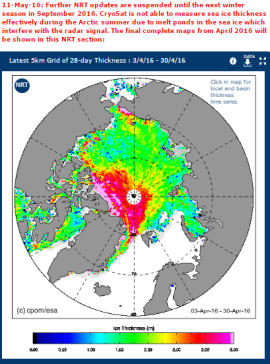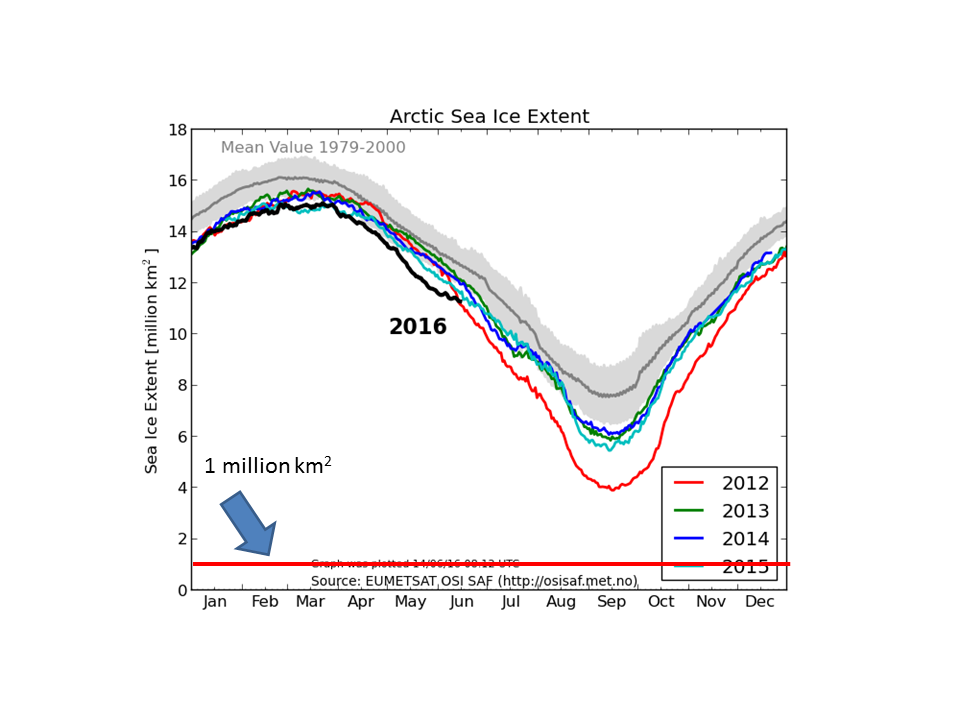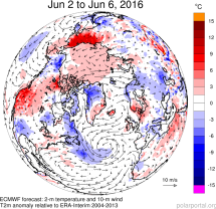Tag: fieldwork
Celebration time: PRECISE
Quick update: our project website is now live where updates will be posted as we go…
The news is now officially out: I’m really delighted to announce the funding of our large project, PRECISE, by the Novo Nordisk Foundation.
The project is led by Professor Christine Hvidberg at the Niels Bohr Institute and there is a really nice interview with her on their website about our plans that’s worth a read. I’m co-PI and lead on surface mass balance processes and coupled climate models within the project so I thought it might be worth giving a quick overview of what we hope to achieve.
TL;DR? We will be improving estimates of and assessing the uncertainties in sea level rise projections from the two big ice sheets in Greenland and Antarctica.

This is ours…
Slightly longer version: we’re using new approaches from materials science to incorporate “new” physics in ice sheet models. We’re also integrating in-situ observations and satellite data into our model frameworks and using these to train machine-learning tools. My work package will emulate our physics based numerical climate models to expand the ensemble and generate a statistical approach for assessing ice sheet stability as well as investigating important feedbacks between different elements of the earth system. Finally, we (or rather my colleague Christian Rodehacke and his postdoc) will run our coupled climate – ice sheet model (EC-EARTH-PISM), including these advances, to generate new sea level rise projections.
The outputs from all these experiments will be communicated and developed in collaboration with the Danish Klima Atlas (Climate Atlas) to ensure we are focused on the right kind of data and time periods for use by stakeholders and local populations when it comes to adaptation planning.

So why this project?
One of the most iconic images to come out of the last IPCC 6th asessment report (at least in my little corner of the climate science universe) is this one on sea level rise projections out to 2100.

Much of climate science has, at least to some extent been “solved”. At least in the sense that we understand the mechanisms and processes quite well and the remaining uncertainty is to some extent tinkering around the edges, often bound up with uncertainty on scenario, or related to impacts – there’s still quite large uncertainty on what will happen to the Amazon rainforest at different levels of emissions for example. However, sea level rise is really an exception to this. It’s very difficult to be sure that some very unpleasant surprises are really implausible.
We’re reasonably certain that global mean sea level will rise by at least 2 metres and around a metre by the end of this century with further sea level rise likely to continue perhaps for centuries.
The IPCC for example, concluded that sea level rise of 15 metres or more by 2300 can’t be ruled out, even if it seems rather unlikely. And this poses a pretty large problem to planners, politicians, stakeholders and providers of coastal services. Working out how far and how fast we expect the sea to rise is really our challenge.
But there is also a risk of abrupt and extreme sea level rise that could come round the corner to surprise us. However, it’s hard to know how likely this is or even how to evaluate that risk.
This has become something of a theme for me in the last few years. I have been working on the Horizon 2020 project PROTECT which very much focuses on the cryosphere and sea level rise, and I’m coordinating Horizon Europe’s OCEAN:ICE which focuses much more on the influence and feedbacks between Antarctic ice sheet and ocean.
Where PRECISE differs is that we have the flexibility within this project to develop new and innovative techniques that we’re not quite sure will work: especially the development of machine learning tools.
The EU science budget is a brilliant thing, but risky research is difficult to get through, the Move Nordisk challenge centres allow us to try really new and, yes, risky techniques. Though climate is a new topic for them, so we’re very much test bunnies in this new phase of funding science for them.
So what are we going to be doing practically?

Our partners at NBI include Joachim Mathiesen, Helle Astrid Kjær, Aslak Grinsted and Nicholas Rathmann. They will be focusing on assembling field data from both ice sheets, and developing new physical solutions for ice sheet models based on solutions from materials science. They will be looking at phase field approaches for ice flow, at new solutions for calving and ice fracture and integrating these into ice dynamical models. NBI will also be doing fieldwork to collect new surface mass budget (SMB) data from the ice sheets.

The SMB part of the work is part that I’m especially involved in. Not just in modelling SMB with our climate and weather models as we do on the polar portal but also in getting a much better understanding on the uncertainty in these models associated with precipitation (which is much higher than that associated with e.g. temperature, especially when it is snowfall). So new observations with a high time resolution will be key for improving our current snowpack models.

We will also be working on bringing regional climate emulators into use over both ice sheets to see how varying starting conditions will vary the outcomes. We know that on a chaotic system like weather starting conditions are key and emulators allow us to do many many more experiments than with our physics based numerical codes alone. It’s pretty cutting edge stuff right now but I know several groups are working on this – including this fantastic paper that recently came out of the Delft/Leuven group, which really shows what is possible
Our other collaborator, Hilmar Gudmundsson at University Northumbria Newcastle will be working on implementing these processes in ice sheet models and examining how plausible instability in ice sheet simulations is using ensembles of multiple model simulations. They will also be using and developing their ice shelf emulator to look at basal melting and investigating the potential instabilities in Antarctic ice shelves that could lead to abrupt sea level rise.
Finally, bringing it all together, our EC-Earth-PISM model will be deployed to do coupled climate and ice sheet simulations to see how the two ice sheets influence each other. This work will mostly be supervised by my DMI colleague Christian Rodehacke.
The project will receive 42 million Danish kroner in total (about 5 million euros) of which 8 million dkk will fund work at DMI, work to be carried out by 2 postdocs and a PhD student (so if this sounds like something you’d be interested in working on do get in touch) over the next 6 years from September. In fact most of the funding we have received will go directly to early career scientists, there is nothing in the budget for us seniors! Naturally this has some disadvantages, but given the rapidly aging population wihtin Europe and European science, I see it as a positive and we have lots of cool summer schools, bootcamps and other networking activities planned that will hopefully reach out beyonf PRECISE to the rest of the ice sheet – climate community.
So watch this space…

Power to X
Yesterday, I attended a mini conference on power to X and the potential to generate green synthetic fuels in Greenland.
Power to X became a big thing in Denmark a few years ago and the government is keen to promote it. Danish company Topsoe are currently building a green fuel facility in Herning and they have a nice explainer on their website of the concept.
In Greenland the fuels could be anything from hydrogen to methanol (though I learnt methanol is least likely as it requires a CO2 source that Greenland doesn’t have, ammonia seems the most plausible initially).
It was an interesting meeting, lots of different companies, institutions and the Greenlandic MP Aaja Chemnitz as well as academics were in the room. The emphasis was very much on the social and economic aspects of power to X, but as the title implied: Greenland has the potential to be the “world’s largest energy island.” From a local point of view, Greenland has very high per capita emissions and is heavily dependent on energy imports for transport, though a majority of electricity, at least in the south west, is already hydropower.
Many other smaller and more remote communities however are dependent on diesel generators for heating and power as well as for shipping, fishing and flying between communities.* Transitioning away from these fuels will be challenging but the potential for much larger developments is clear.
Head of development at NunaGreen (the recently rebranded and reoriented NunaOil), Rasmus Wendt, emphasised just how cheap and in theory at least, abundant, Greenland hydropower is. Probably some of the cheapest electricity in the world is generated by Greenlandic dams already operating or planned. And indeed the potential is massive. As the ice sheet melts, enormous amounts of water are produced more or less endlessly in Greenland. It will take at least a thousand years to melt the whole ice sheet, even under a high emissions scenario. We’re not going to run out of water soon.

Observed 2008 state and simulations of the Greenland Ice Sheet at year 3000.
(A) Observed 2008 ice extent (53). (B to D) Likelihood (percentiles) of ice cover as percentage of the ensemble simulations with nonzero ice thickness. Likelihoods less than the 16th percentile are masked. (E) Multiyear composite of observed surface speeds (61). (F to H) Surface speeds from the control simulation. Basin names shown in (A) in clockwise order are southwest (SW), central-west (CW), northwest (NW), north (NO), northeast (NE), and southeast (SE). RCP 2.6 (B and F), RCP 4.5 (C and G), and RCP 8.5 (D and H). Topography in meters above sea level (m a.s.l.) [(A) to (H)].
Wind energy too is extremely underdeveloped but potentially huge in Greenland. The problem is of course, all that potential energy is a long way from the end users as this screenshot from the global wind atlas, shared by energy scenario planner Brian Vad Mathiessen shows well.

By sheer coincidence, this morning I stumbled over this article in the Dutch newspaper NRC on mastodon about the large green hydrogen facility currently under construction by Shell in Rotterdam.
It’s a really interesting read – (if you don’t speak Dutch try DeepL translation) and I was struck by many of the same issues being raised there as in the Greenland meeting: lack of trained staff, uncertain commercial environment, cost and competitiveness with other energy sources. Unlike in Greenland, energy in the Netherlands for producing synthetic fuels is scarce, but the market for using the energy is huge and nearby, and given the EU’s ambitions to produce and, crucially, import large amounts of hydrogen fuel by 2030, it seems like many of the important stars are aligning. Importing ammonia to Rotterdam for cracking back into hydrogen seems like it could actually be a viable future for Greenlandic generated fuels in Greenland he medium to long term.
We at DMI are shortly starting a project within the National Centre for Climate Research framework looking at exactly the potential to generate renewable energy from a climate and weather angle. But what I took away from yesterday’s meeting is that while the physical potential in Greenland really is HUGE, the regulatory environment – and probably the local population – is supportive, the economic certainty is not quite there yet.
It felt a bit like being in a bunch of young seabirds clustered on the edge of the cliff, none quite daring to take the flight, in spite of the undoubted rewards. And indeed, this seems the situation in the Netherlands too. I was especially struck by this quote in the NRC piece:
“Another problem is that many parties are just waiting for each other to take the first step so that they themselves dare to go. Producers, for instance, invest only sparingly because they are not sure whether there will soon be customers, and customers in turn hesitate because they are not sure whether the producers will deliver. The classic chicken-and-egg story.”
Chris Hensen, NRC, 17thnMay 2023 “De Europese waterstofambities zijn groot, maar bedrijven zijn nog altijd afwachtend”
(Translated with DeepL)
Perhaps the diving in of Shell, a company that can afford to risk investing a billion Euros in a new facility in Rotterdam, is what the development of Power to X needs?
BP, Air liquide and Uniper already have plans to build follow on plants in Rotterdam. Once one of the birds have taken flight, others will surely follow.
Thanks to Aalborg University,and especially my Danish Arctic Research Forum colleague Carina Ren for an interesting and inspiring meeting.
*(As an aside, I was reflecting while on fieldwork just how difficult removing fossil fuels from scientific work in Greenland will be. We rely on petrol generators to power equipment and oil stoves to warm tents. What if we could develop an easy to operate “tabletop” (or even just room sized) electrolysis system to generate clean fuels from e.g. wind energy, that we could burn instead of paraffin and/petrol? I’d invest in that and it would be a quick win for Greenland science.)

The further adventures of batgirl…
I wrote this series of comics to amuse and inform my kids while I was on fieldwork a few years ago. It turned out to be quite a success and my kids classes both read the Danish versions at their school.
Last year I started https://icemangoeshome.wordpress.com/more-arctic-adventures/ the further adventures of batgirl on the ice with her new friends the Lego scientists and a couple of stowaways.. but last year’s season was extremely busy and I never managed to finish it.
I asked yesterday on mastodon if I should do another this year, and the only feedback I got was I should try to finish the one I started last year. So maybe that’s what I’ll try to do. It’s always challenging fitting around field tasks though so no promises.
This is just a quick post from the airport: you’ve been warned, bat girls and her friends are on their way back with a new season!
A New Arctic Adventure

Signs of Spring
Currently, I’m very busy getting ready with colleagues to travel to Greenland next week. We have an extremely full programme of fieldwork activities covering oceanography, biology, sea ice, snow and glacier processes as part of our NCKF work. More on these no doubt in a future post…
Yesterday, one of my ace DMI colleagues (without whom most of the work we plan would definitely not happen) shared the first optical satellite image of the area this year – taken by ESA’s Sentinel 2 (a truly astonishing source of free imagery and everone should know about it). Because the area is very far north, it has been in the Polar night until now so we have been reliant on the ESA Sentinel 1 imagery based on radar.

It’s a wonderful thing to see the first satellite image of Spring, akin to other signs like the first cuckoo (in the UK), the first peewit egg (in the Netherlands), and the timing of the cherry blossom in Kyoto.

There was recently a very illuminating thread on phenology on mastodon in reply to a query by Pauline von Hellerman where the Diagram Monkey John Kennedy pointed out the existence of the Pan European Phenology network – not something I was aware of before (though I’d suspected it’s existence) – and who have all sorts of interesting data.
Where biology is clearly showing us earlier springs due to climate change, the date of the first optical image is unlikely to change any time soon due to climate change.

Nor are species assemblages (it’s not quite certain that it’s the same variety of cherry blossom for the whole 1200 year period), or biodiversity losses (the cuckoo is down 65% since the early 1980s alone in the UK, and heaven knows it was not particularly common then) likely to affect it. Not to mention human behaviour changes, the lapwing has gone from being a common agricultural bird to near threatened over the same period, which probably also affects the reliability of that data.

Of course, quite a bit of what you might call bulk phenology can be done by satellite too now…

As for Qaanaaq, there is not much in the way of biological phenology, but a compilation and analysis of data on sea ice cover and thickness over the last 60 years would probably be as instructive. Do get in touch if you’re interested in doing this as a student project…
Qaanaaq
I have been meaning to write about my return to field science (after 10 years mostly working on climate models) for the last 2 years, but prompted by this beautifully written piece in the Danish Newspaper information, I decided Christmas Day was the day (it for sure beats the washing up)…
“For at forstå, hvad der er ved at ske ved kloden, rejste vi mod isens ende”
Martin Bahn og Anders Rye Skjoldjensen (foto) in Information 23rd December 2022
“To understand what is happening to the earth, we travelled to the end of the ice”
To make one thing very clear straight away, and as the newspaper article also makes very clear, my colleague Steffen Malskær Olsen has established and maintained a very long-running programme of observations in the fjord near Qaanaaq. This town in northern Greenland on the edge of a large fjord, and close to the North Water polynya has a uniquely interesting location to study and understand Arctic processes. The DMI facility there is long established and part of the INTERACT network of Arctic field stations. The 15-year record collected by Steffen is more or less unbroken and uniquely valuable. None of the science I’m planning to do or to work on would be possible without his dedication, hard work, insight and bridge building within the community in Qaanaaq. He and my other DMI colleagues involved in this programme are brilliant scientists and great field companions and I feel privileged to be able to work with them in this incredible place.

Secondly, as the article also makes clear, scientists are not individualistic heroes who beat the odds, it’s a team sport. And it’s especially true in Greenland where the true heroes of this story are probably not scientists but the local hunters and fishers who guide and transport us and whose knowledge and experience is unmatched. I include also on this category our DMI colleague Aksel Ascanius who lives and works in Qaanaaq has been an essential part of the programme since the earliest days, as well as keeping other long-term observations in the network running in this part of the world.
Collaboration with the people who live in the Arctic has been essential for success in Arctic science since since the days of Franklin and Rae (for British readers) or Suersaq, aka Hans Hendrik, (after whom Hans Island is named) for Danes..
Anyway, back to the science of the present-day. DMI has progressively added more and more elements to the field laboratory in Qaanaaq in addition to the longer running observations. A non-exhaustive list would include an infrasound monitoring station that is part of the CTBTO, weather observations (of course), surface emissivity measurements by drone, fjord salinity, temperature and photosynthetically available radiation measurements plus snow and sea ice measurements as well as work with satellites and biology. One glaring omission, up to this year at least, was the glaciology of the region. How does the ice sheet affect the regional climate, how does the ocean affect the glaciers that calve into the fjord? Can we learn about some important but poorly understood processes like calving and melange dynamics using this area as a test bed? What about surface mass budget and snowfall and snow melt?

Now, as a glaciologist, I’ve mostly worked with the interface between atmosphere and ice sheet (at least the last 14 years or so, but I am also still (after my PhD topic on ice fracture and crevasses) interested in calving glaciers and the processes that control how fast icebergs form. And the fjord, Inglefield Bredning has *a lot* of calving glaciers in it. It is a natural laboratory for glaciology and for developing numerical models. Calving is actually a surprisingly difficult thing to model with computer models of glaciers.
Or perhaps it’s not that surprising?
Observations are difficult to get (to put it mildly). There are a number of (possibly wild) theories of “calving laws” that remain poorly constrained by observations as a result. Common parameterizations of ice flow makes it hard to deal with fast flowing glaciers where calving is common. Dealing with grounding lines, where glaciers meet the sea and start to come close to flotation can give notorious numerical errors and retreat requires the remaking of ocean grids in fully coupled climate models.

These are not easy or computationally cheap problems to solve. And where there are at least thousands (maybe even tens of thousands?) of scientists working on atmospheric weather and climate modelling, the community working on ice sheet dynamic models is probably only in the low hundreds.
And of course, we really lack long time series of measurements – essential in a system that changes only s l o w l y, but likely irreversibly and which we are, only now as the system is changing rapidly, starting to understand.
This of course is why the fjord observation record of Steffen is so valuable – these are reliable, repeated measurements of ocean properties that are known to affect the outlet glaciers that meet them. It is indeed a natural laboratory.
What we are now also working on is a field lab to study these calving processes in-situ. I have already found the return to the field scientifically valuable. There is really no replacement for going to observe the earth system you want to understand. (My PhD supervisor used to call it “nurturing your inner glacier”). Observations taken in spring/summer 2022 have already changed how I think about some processes and hopefully the follow-up we have planned in 2023 will confirm our new theoretical framework.

I am fortunate indeed in that at the same research department, we also have colleagues collecting and analyzing satellite data and developing the numerical models we want to use to understand how ice sheets fit into the earth system. All three of these elements – field, satellite and numerical model- are essential.
In this project we are using the satellite observations to extend the time series of field data and we can use both sets of observations together to develop and test a numerical model of this fjord and the glaciers that calve into it. The numerical model we can then extend to other glaciers in Greenland. Hopefully, we can also use this work to understand how Antarctic glaciers might also respond to a warming ocean. Ultimately, the aim of all this work is to understand the contribution of these glaciers to sea level rise both now and in the future.
This is not a frivolous question. In fact, if large (more than a couple of metres).of sea level rise is expected, it is a question that is basically existential for Denmark.
I will add more on the specifics and science in coming months, this is already long enough. However, I’d like to mention a couple of other points:
Firstly, DMI is by no means alone operating up here. Many of the key articles, particularly on glaciology in this region, have been written by the Japanese group at Hokkaido University and their collaborators at the Meteorological Research Institute, the national institute for polar research and others. We at DMI are also working directly with the Greenland institute of natural resources, Asiaq, GEUS, KU, DTU, AU, SDU, ESA, Eumetsat and many others in this research programme.
Secondly, if you want to read more about it, I made these comics for my kids featuring some of their Lego pieces while out in the field this year and last. They’re kind of fun (I hope) and also informative (I hope).
Finally, this work is currently being carried out under the auspices of the Danish National Centre for Climate Research (NCKF), funded by the Danish Government though with contributions also from other research projects mostly funded by the EU’s Horizon 2020 and Horizon Europe frameworks as well as ESA’s climate change initiative for the Greenland ice sheet.
